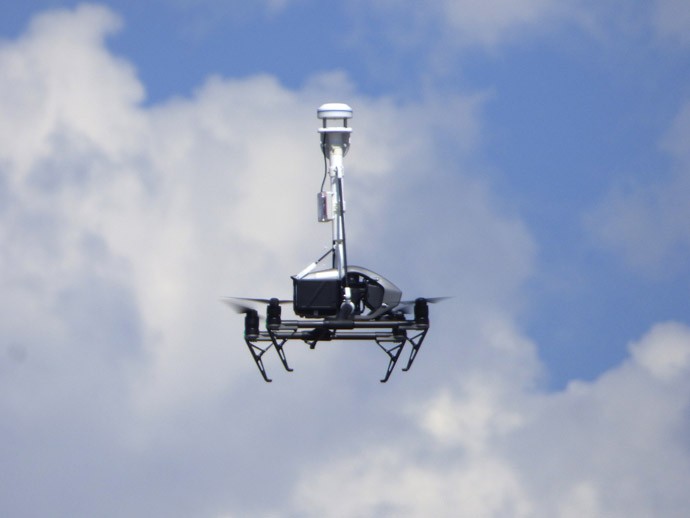Center hosts drone demo

CENTER — After speaking to crowds at Leach Airport, unmanned air systems (UAS) Chief Executive Officer Constantin Diehl on Saturday conducted a tour of Leach Airfield to explain the various functions of drones being tested July 14-17 and their potential benefit for the Valley.
Current applications for drones include drought assessment and flood forecasting, water conservation and usage, emergency search and rescue operations, property assessment, agricultural uses, GPS mapping and other applications. One roofer in Denver is even using drones to assess roof damage.
Drones in flight delighted the audience and offered a bird’s eye view of just some of their capabilities. Several universities from across the country attended the testing. These included: Environmental Sciences at the University of Colorado Boulder, Oklahoma State University, University of Oklahoma, University of Kentucky, University of Nebraska Lincoln, Kansas State University, Virginia Tech and the University of Virginia.
The National Science Foundation, Department of Energy, National Oceanic and Atmospheric Administration (including the UAS Program) and National Center for Atmospheric Research representatives also attended the event.
Diehl said what he would like to see for the Valley is for drone operations in the line of sight to be able to do more research on the horticulture level. He said UAS is currently working with the Cropduster’s Association to test drone visualization from a small aircraft standpoint in order to work out safety issues.
“If a [drone] crash with a cropduster occurred, it would likely be catastrophic,” he observed. “We hope cropdusters can eventually see them.” He also explained that this can be done with tracking devices, whether GPS or some other type of device.
While it appears to some that drone development is being held up by a failure of the Federal Aviation Administration (FAA) to deal with paperwork, “The applications I have requested have been granted in time,” Diehl said. “The industry players are slower; they take longer to put rules in place.”
He said the FAA made a special effort for all those participating at the drone event in Center to receive their timely qualifications to operate.
Diehl pointed to the inner workings of an ISSARA monitoring station, set up in a van at the field. Technicians monitored the movements of drones at the demonstration on dual computer monitors in the van and received data on their operations.
“We are conducting an intensive study of atmospheric conditions,” Cory Dickson with Colorado University in Boulder explained. The study focused partly on how conditions change from sunrise to sunset and how weather systems develop.
A tower mounted to the outside of the ISARRA van monitored the drone then descending slowly to the ground.
Caption: A drone descends from the sky, landing feet extended, during the drone demonstration at Leach Airport Saturday. /Photo by Teresa L. Benns



